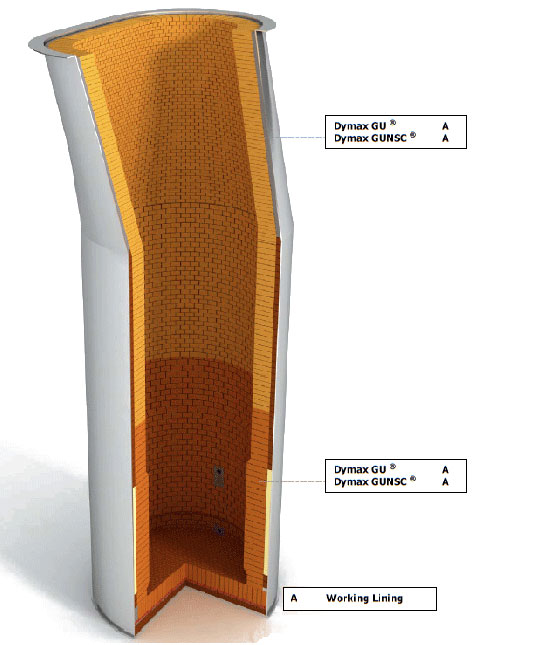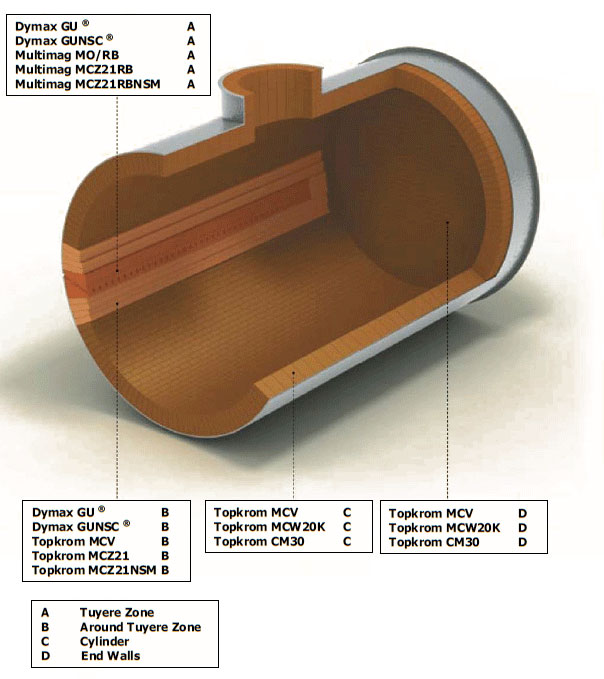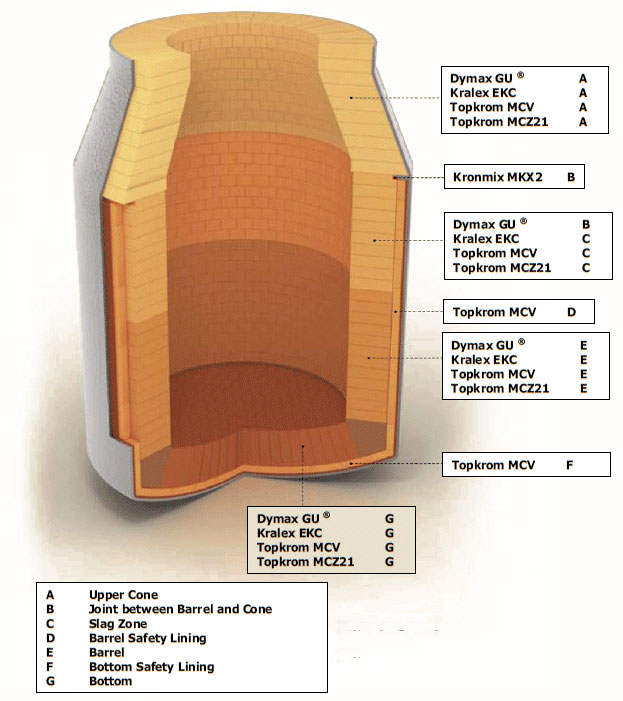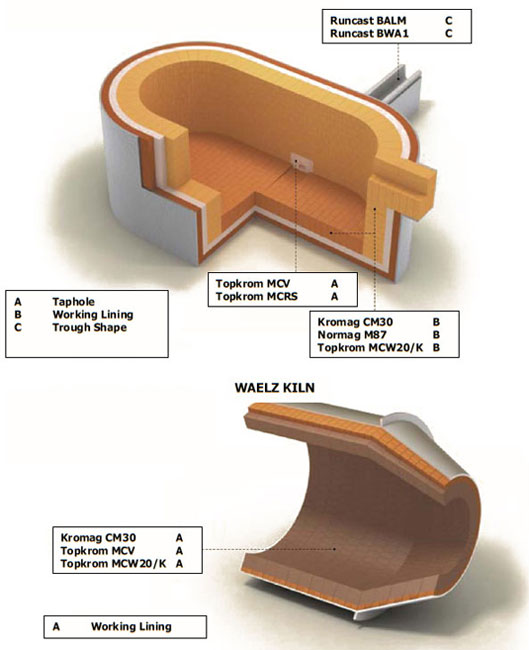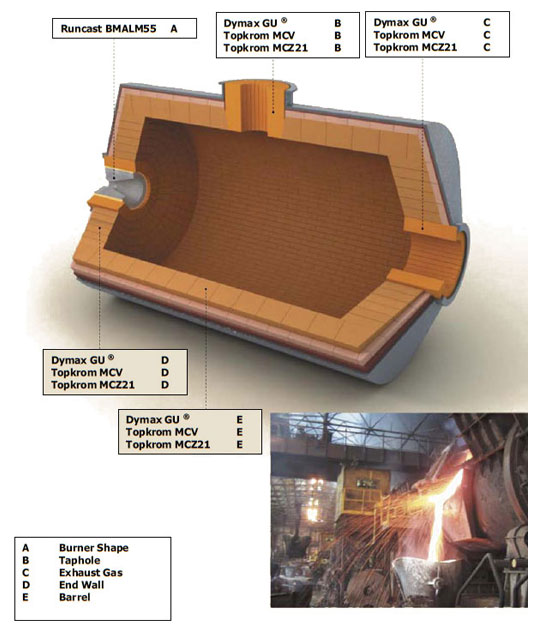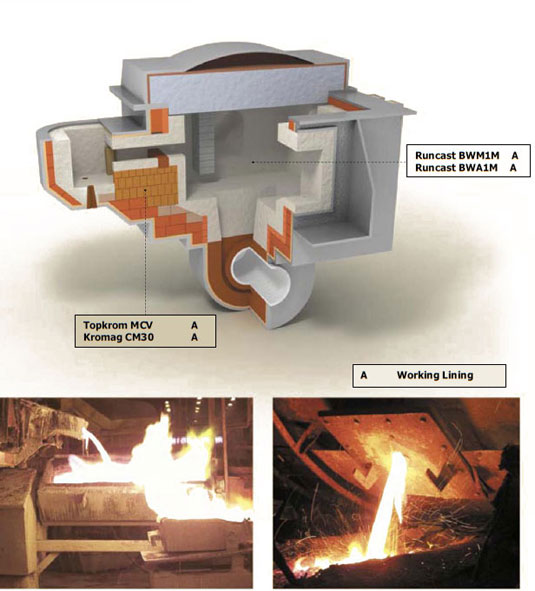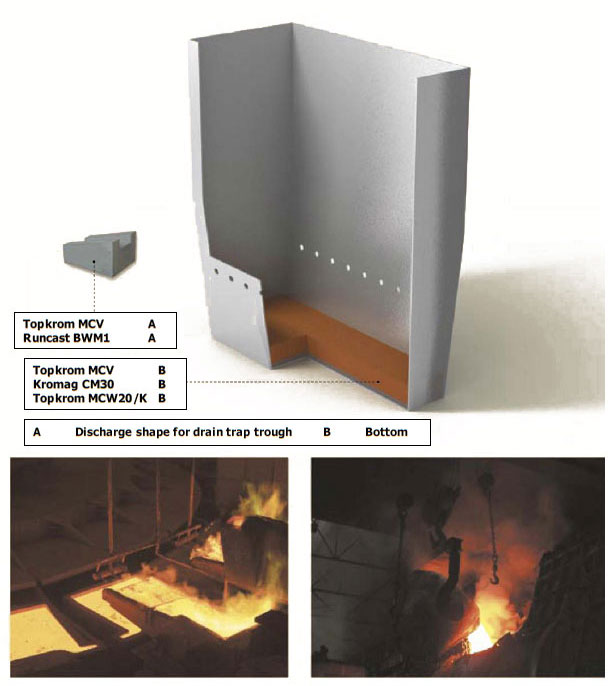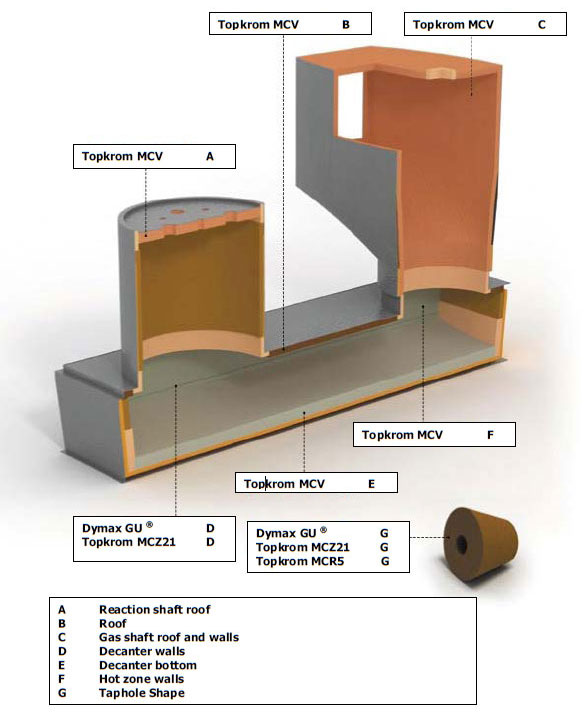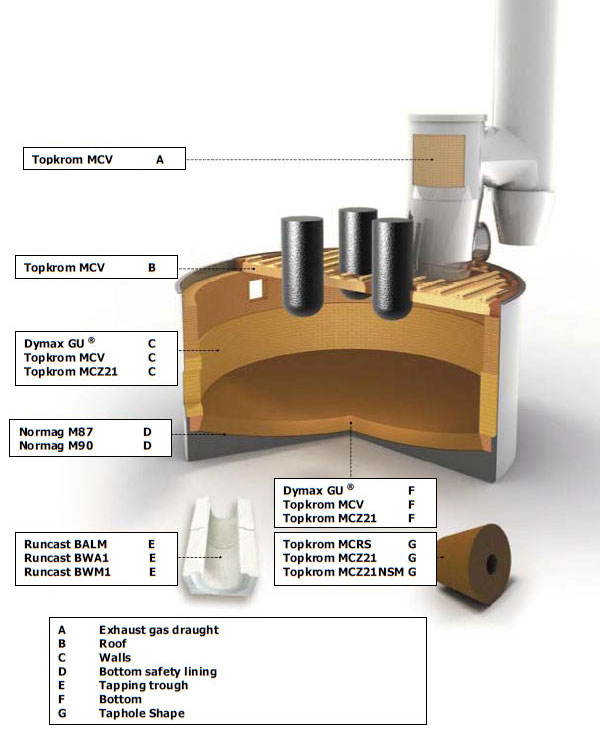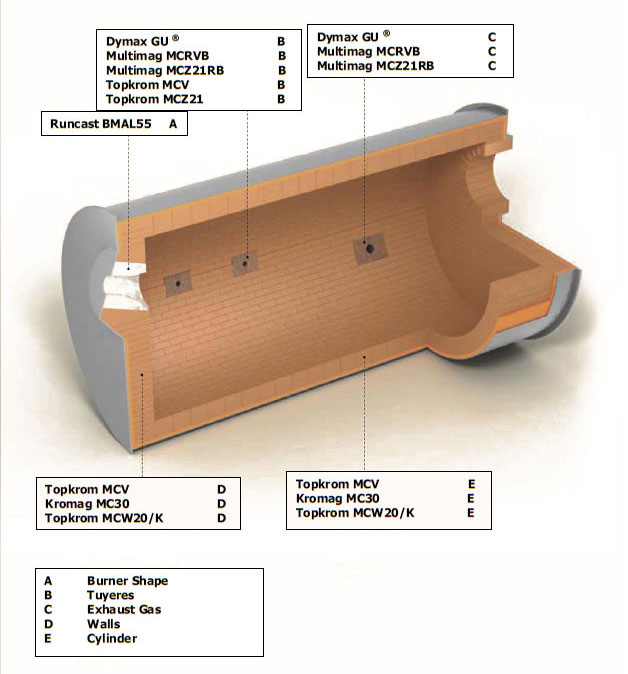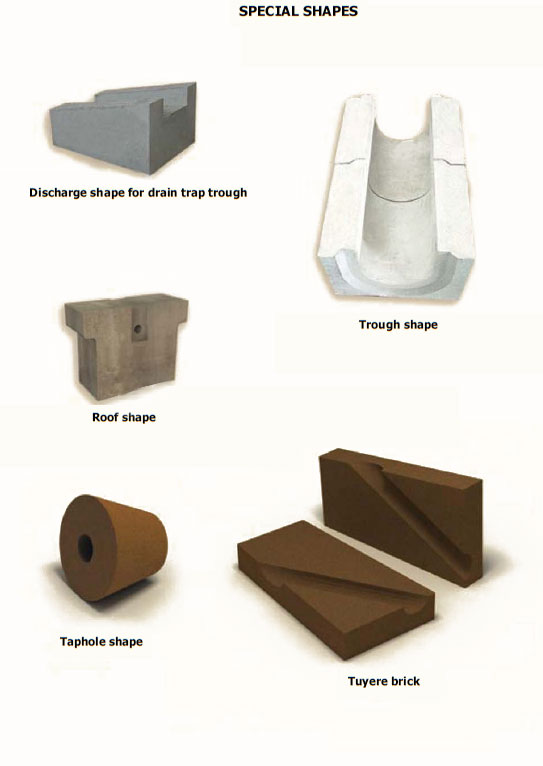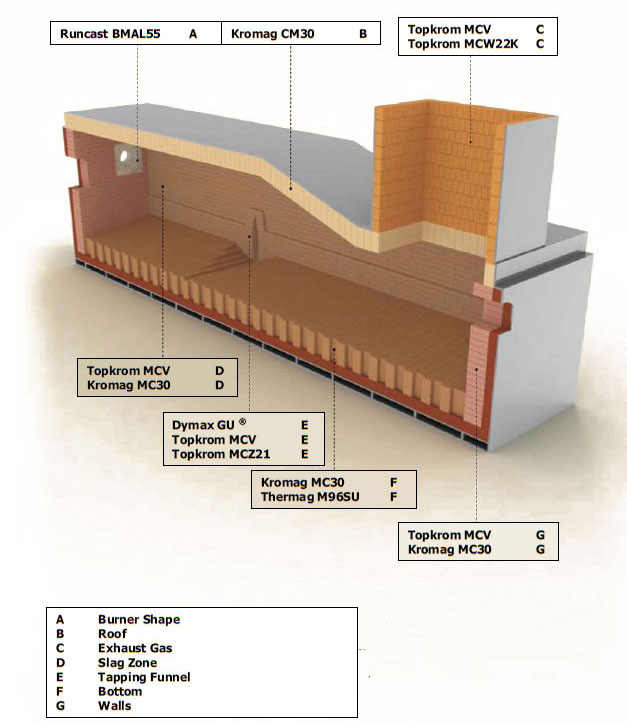Non Ferrous Industry
Copper
Copper smelting has changed radically during the nineteenth century, the most significant being the development of flash smelters by both INCO and OUTOKUMPU, and continuous processes by NORANDA and MITSUBISHI. The bulk of smelting, 2,000,000 tonnes, is produced using flash smelters, compared with 1,700,000 tonnes by reverberatory furnace, using only half the number of reverberatory furnaces. Flash furnaces have major benefits over reverberatory furnaces, particularly in fuel efficiency, and increased yield.
The Smelting Process
Primary smelting vessels, whether they are flash furnaces, reverberatory furnaces or electric arc furnaces all subject the refractory lining to attack by slag and sulphur gases. The slag composition is normally high in Fe2O3 and SiO2, both of which attack magnesia in the refractory to form magnesio-ferrite, and Forsterite, whilst the sulphur present in the vapor phase also attacks magnesia to form magnesium sulphate. All reactions in the refractory system are accompanied by volume expansion, leading to crack formation behind the working face, which are then lost during temperature cycling.
Direct bonded Chrome - magnesite refractories are the preferred materials in contact with copper slags, owing to their greater tolerance to acidic slags, by limitation of free magnesia. Improved products based upon presintered clinker and/or fused grain clinkers also show further benefit.
THE CONVERTER
The copper converter carries similar slags to those found in the smelting process, together with sulphurous gases, and consequently similar modes of refractory attack take place. Preferential wear frequently takes place at the tuyere line of the converter owing to the combination of slag attack and thermal shock, in this area high hot strength chrome - magnesite with good thermal shock resistance are a prerequisite.
ANODE FURNACE
There is little slag present in the Anode furnace, but the refractory lining is in contact with highly penetrative molten copper and cuprous oxide. Penetration of the refractory material with copper leads to disruptive failure owing to crack formation at the limit of penetration. Reaction between copper oxide and silica in the refractory leads to the formation of low melting point compound which exacerbate the formation of cracks, and loss of the working face.
The working environment of the Anode furnace demands a chrome - magnesite material with high hot strength to minimize copper penetration and disruptive loss of the working face.
SLAG - CLEANING FURNACE
The slag cleaning furnace has special requirements depending upon the slag practice.
With a frozen slag practice, as the name implies, it is necessary to maintain a frozen slag layer on the refractory lining, requiring a highly conductive refractory lining.
Direct bonded Magnesite - chrome materials with good hot strength are the preferred refractory lining.
Practices using an 'active molten slag layer' require a refractory material with good slag and penetration resistance. Direct bonded Chrome - magnesite materials perform well in this application.
Product Applications
